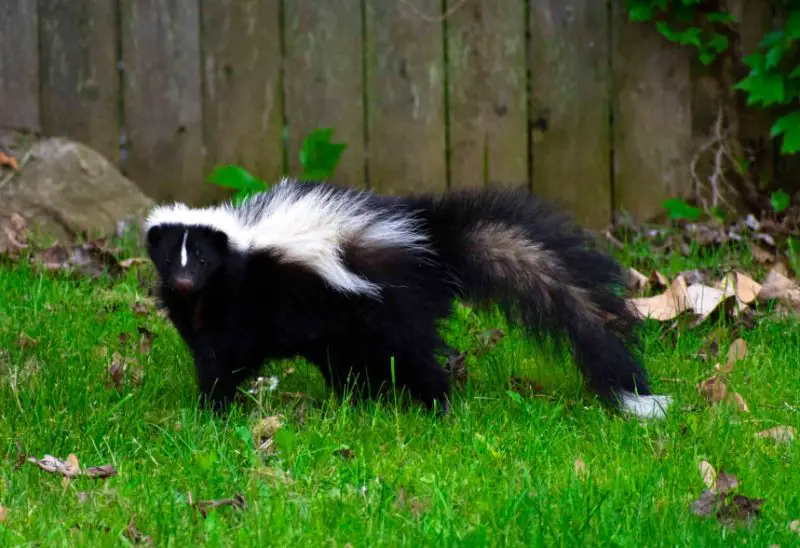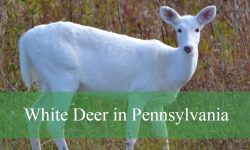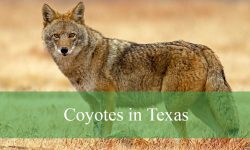In Kansas, skunks often get a bad reputation simply because people don’t really understand them. Known for their pungent defense spray, these small mammals have earned an infamous reputation across the state. But few people actually understand why skunks spray so often, especially in Kansas where encounters seem more frequent than elsewhere.
This article explores the real reasons behind this behavior, diving deep into the skunk’s biology, environment, and survival instincts. From seasonal triggers to human interactions, you’ll learn what drives Kansas skunks to use their notorious weapon more often than you might think.
Understanding Skunks in Kansas

Common Skunk Species in Kansas
Kansas is home to two primary skunk species: the striped skunk (Mephitis mephitis) and the eastern spotted skunk (Spilogale putorius). The striped skunk is by far the most common, easily recognizable by its bold white stripe running from head to tail. The eastern spotted skunk, on the other hand, has a pattern of broken white spots and stripes that make it look more speckled.
Both species inhabit rural, suburban, and even urban areas across Kansas. They are nocturnal creatures that prefer to forage at night, searching for insects, small rodents, fruits, and other available food sources. Their adaptability allows them to thrive in diverse environments—from farmlands and forests to city neighborhoods and parks.
How Skunks Use Their Spray
A skunk’s spray is its primary defense mechanism. Produced by anal scent glands, this oily liquid contains sulfur-based compounds called thiols. These chemicals are responsible for the foul, long-lasting odor that can linger for days.
Skunks can spray accurately up to 10 feet away, and the effect can be overwhelming for any predator or unlucky human nearby. While spraying is an effective way to deter threats, it’s not something skunks do casually. Each skunk has a limited amount of spray, and it can take up to 10 days for the glands to refill after use. This means that frequent spraying comes at a cost, forcing skunks to be strategic about when to deploy it.
Why Skunks in Kansas Spray So Often
Increased Human Encounters
One of the biggest reasons skunks in Kansas spray more often than in many other states is the high level of human interaction. Kansas has a mix of agricultural land, expanding suburban developments, and small towns surrounded by open fields—prime skunk territory.
As people move into rural areas, skunks find more opportunities for shelter under decks, sheds, or porches. When humans or pets accidentally startle them, their instinctive reaction is to spray. These unintentional encounters have increased with urban expansion, making skunk spray incidents more frequent.
Predators and Threats
Skunks face several natural predators in Kansas, including coyotes, foxes, bobcats, and great horned owls. Of these, the great horned owl is particularly significant because it’s one of the few animals unaffected by the smell of skunk spray.
When predators are abundant or especially active, skunks become more defensive. They may spray preemptively if they sense danger nearby. Kansas’s diverse wildlife population and open landscapes make these encounters fairly common, especially during warmer months when both skunks and predators are more active.
Seasonal Factors and Mating Season
Skunks spray more frequently during the mating season, which typically occurs from late winter to early spring. Male skunks become aggressive and territorial, often fighting with rivals over females. These confrontations can easily lead to spraying as both males and females use the scent as a way to communicate or ward off unwanted suitors.
In Kansas, fluctuating temperatures and mild winters in some regions can extend the breeding season. This results in more encounters, more territorial disputes, and ultimately, more spraying incidents. During this period, even residents who rarely see skunks may suddenly notice the pungent smell in their neighborhoods.
The Biology Behind the Spray
How the Glands Work
Each skunk has two anal scent glands located on either side of the anus, connected to small ducts that allow precise aiming. When threatened, the skunk arches its back, lifts its tail, and releases a fine mist or direct stream toward the target.
The spray is chemically complex, composed mainly of volatile sulfur compounds. These include thiols and thioacetates, which oxidize over time and contribute to the lingering stench. The compounds are so potent that even trace amounts can be detected by humans at extremely low concentrations—just a few parts per billion.
Warning Behaviors Before Spraying
Skunks rarely spray without warning. They exhibit several defensive behaviors first, such as stomping their feet, hissing, arching their back, and raising their tail. These signals serve as a final warning before they deploy their chemical weapon.
However, in Kansas, where skunks often come into contact with pets or startled humans, these warnings might go unnoticed or ignored. Dogs in particular tend to approach skunks too closely, triggering an immediate spray response. This is why Kansas veterinarians report a spike in “skunk spray cases” during the spring and summer months.
Environmental Triggers in Kansas
Climate and Habitat Conditions
Kansas’s varied landscape plays a key role in why skunks spray so often. The state’s mix of prairies, forests, and farmland offers abundant food but also exposes skunks to frequent threats. During dry seasons, water sources become limited, and skunks move closer to human areas to find hydration and food. These movements increase the chances of close encounters.
Moreover, Kansas’s temperature fluctuations can make skunks more active during early evening hours when humans are still outdoors. This overlap in activity time contributes to more accidental interactions—and more spraying incidents.
Roadside Habitats and Urban Edges
Skunks often make dens along road edges, culverts, or under abandoned structures. These locations provide easy access to insects and small animals but also put skunks in the path of cars and pedestrians.
When startled by headlights or loud noises, skunks instinctively spray before fleeing. In Kansas, where rural highways cut through natural habitats, it’s not unusual for the smell of skunk spray to linger along roadsides. This pattern has even led locals to jokingly call the scent “the smell of Kansas night air.”
Behavioral Reasons for Frequent Spraying
Fear and Startle Response
Skunks are naturally timid creatures. When surprised, their first instinct is to defend themselves rather than fight or flee. Because Kansas has many nocturnal predators and a large number of active humans and pets at night, skunks are often startled unexpectedly.
This frequent startle response results in more defensive sprays. Even harmless disturbances—such as barking dogs, car doors slamming, or sudden light—can cause a frightened skunk to release its odor.
Territorial Communication
Skunks also use their scent as a form of communication. During the breeding season, the spray can mark territories or signal to potential mates. Males in Kansas often spray to claim areas rich in food or suitable den sites.
This territorial marking is less intense than full defensive sprays but still noticeable to humans nearby. These scent signals help establish dominance among local skunks, especially when populations are dense or food competition is high.
The Human Factor
Urban Expansion and Habitat Overlap
Kansas’s growing suburban communities are expanding into traditional skunk habitats. As homes, farms, and roads spread into previously wild areas, skunks adapt by nesting near people. Garbage bins, compost piles, and pet food bowls provide easy meals for nocturnal scavengers.
Unfortunately, this proximity leads to more encounters. When people or pets stumble upon a skunk’s den or surprise it during nighttime activities, the animal’s only defense is to spray. The rise in such incidents correlates directly with ongoing development across Kansas suburbs and rural outskirts.
Domestic Pets and Skunk Conflicts
Dogs are responsible for a large percentage of skunk sprays in Kansas. Curious and bold, dogs often approach skunks too closely, ignoring warning signs. The result is a smelly standoff that ends badly for the dog.
Cats, while more cautious, sometimes provoke skunks near food sources or during nighttime wanderings. Pet owners in Kansas often report skunk spray incidents during summer nights when both skunks and pets are most active outdoors.
How to Avoid Getting Sprayed by a Skunk
Recognize Skunk Warning Signs
Learning to recognize skunk behavior is the best way to avoid getting sprayed. If you see a skunk raising its tail, stomping, or turning its back toward you, it’s preparing to spray. Back away slowly without sudden movements, and avoid making loud noises or shining bright lights directly at the animal.
Skunks rarely attack unprovoked. Giving them time and space to escape is usually enough to prevent a spray. Kansas residents who frequently spend time outdoors at night should carry a small flashlight and remain alert to movement near bushes or under decks.
Prevent Skunks Around Your Home
Reducing attractants is key to keeping skunks away from residential areas. Secure garbage bins with tight-fitting lids, avoid leaving pet food outside overnight, and seal potential denning spots under porches or sheds.
Motion-activated lights can also discourage nocturnal visits, though they won’t work on every skunk. Using natural repellents like citrus peels or ammonia-soaked rags may help temporarily, but habitat modification remains the most effective long-term strategy.
What To Do If You or Your Pet Get Sprayed
Quick Cleaning Tips
If you or your pet get sprayed, time is crucial. The longer the oil sits on fur or skin, the stronger the odor becomes. For pets, mix a solution of 1 quart hydrogen peroxide, 1/4 cup baking soda, and 1 teaspoon of liquid dish soap. Apply it immediately, avoiding the eyes, and rinse thoroughly with water.
Avoid using tomato juice—it only masks the odor temporarily. For clothing or fabric, soak the items in vinegar and water before washing. For skin exposure, use mild soap and cold water to reduce irritation and smell.
When to Seek Professional Help
If a skunk sprays inside your home or under a structure, professional wildlife removal services are recommended. Skunk odor can cling to wood, insulation, and fabrics, making it nearly impossible to remove completely without specialized cleaning.
In rare cases, skunks may also carry rabies. Any close encounter that involves biting or scratching should be reported to local animal control, and medical attention should be sought immediately.
Ecological Importance of Skunks in Kansas
Despite their smelly defense, skunks play an important ecological role. They control pest populations by feeding on insects, grubs, and small rodents. Farmers benefit from skunks because they help reduce crop-damaging pests naturally.
In Kansas’s balanced ecosystem, skunks contribute to soil aeration while digging for food. Their presence indicates a healthy environment with diverse prey species. Understanding their behavior—including why they spray—helps humans coexist more peacefully with these misunderstood mammals.
Fun Facts About Skunks in Kansas
- Skunks are immune to most snake venom, including that of rattlesnakes.
- The striped skunk is the official mammal of several U.S. states, though not Kansas.
- A skunk’s spray is detectable by humans from over half a mile away under ideal conditions.
- Baby skunks can spray as early as three weeks old.
- Skunks can live up to seven years in the wild, though many don’t survive their first year due to predators and traffic.
Frequently Asked Questions About Kansas Skunks
Do skunks in Kansas spray more than in other states?
Yes, partly due to habitat overlap with humans and high predator activity. Kansas’s open landscapes and agricultural zones lead to frequent encounters that trigger defensive sprays.
What time of year do skunks spray the most?
Late winter through early spring is the peak spraying season in Kansas. This aligns with mating behavior, territorial disputes, and increased movement.
Are skunks dangerous to humans?
Not usually. Skunks prefer to avoid conflict and spray only when threatened. However, they can carry diseases like rabies, so direct contact should be avoided.
Can skunks climb or jump fences?
Skunks are poor climbers and rarely jump. However, they can dig under fences or squeeze through small openings, especially if food is accessible.
Why does the skunk smell linger for so long?
The thiol compounds in skunk spray bind to skin and fabric fibers, making them resistant to standard cleaning. They oxidize slowly, extending the odor’s lifespan for days.
Conclusion
The reason skunks in Kansas spray so often comes down to a combination of factors: increased human interaction, abundant predators, environmental triggers, and natural instincts. While their spray may be unpleasant, it’s also a remarkable adaptation that allows these gentle mammals to survive in a world full of potential threats.
By understanding the biology and behavior behind this smelly defense, Kansans can learn to coexist more peacefully with skunks. Reducing attractants, respecting their space, and educating others about their ecological value can help limit unnecessary spraying and promote better wildlife harmony throughout the state.






